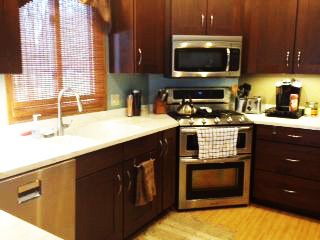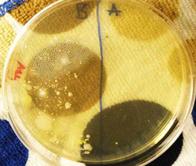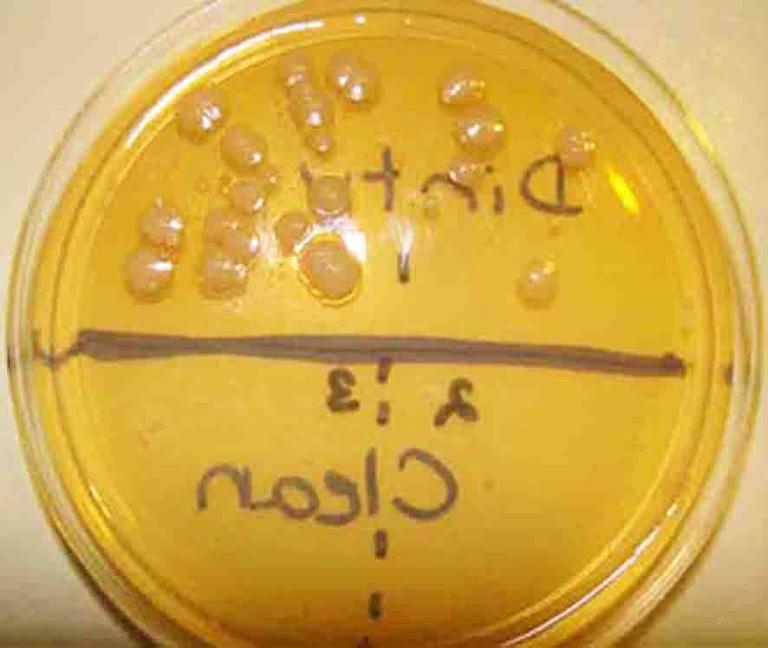 | ||||
Clean Kitchen Tips:
How to Kill Germs & Sanitize Surfaces
Microbiology in the Home from Science Prof Online
Just because a kitchen looks neat and tidy doesn't mean that it's a sanitary, safe place to prepare food. Kitchen sanitation is vital to good health, since microbes, particularly fecal bacteria from the processing of raw meat, are commonly found where we prepare meals. I am a college microbiology instructor, and here are the steps I take to reduce the number of bacteria in my kitchen.
Article Summary: The kitchen sink and counter typically have more fecal coliform bacteria than those same bathroom surfaces. Here's how a microbiologist kills kitchen germs.
Best Ways to Kill Kitchen Germs & Clean Surfaces
 | ||||
You have free access to a large collection of materials used in a college-level introductory microbiology course. The Virtual Microbiology Classroom provides a wide range of free educational resources including PowerPoint Lectures, Study Guides, Review Questions and Practice Test Questions.
Page last updated: 5/2014
SPO VIRTUAL CLASSROOMS
 | ||||||
 | ||||||
SPO is a FREE science education website. Donations are key in helping us provide this resource with fewer ads.
Please help!
(This donation link uses PayPal on a secure connection.)
Dish Rags & Sponges
Sponges are a lot like the bacterial growth media used in microbiology laboratories. Like media, damp, dirty sponges provide both moisture and food for microbes. Don't use them. It is best to instead use a relatively thin dish rag, like Handi Wipes, that will dry out quickly after use. Bacteria, like all other living things, require water to live, so it is important to use a dish rag that can completely dry out between uses.
In addition to using dehydration to control bacterial growth, it is helpful to use a combination of bacterial control methods, such as heat and chemicals:
- cooking the damp dish cloth in the microwave for 15 seconds (kills bacteria with heat)
- spraying the dish cloth with a chemical disinfectant, such as bleach or Lysol
Sanitizing the Floor
The kitchen floor can be one of the dirtiest, germ infested areas of the house. Just vacuuming and mopping may not be effectively cleaning the floor. A steam mop, such as The Shark, is a great home cleaning tool that uses heat (steam) and chemicals (floor cleaner) in combination to sanitize the floor. My microbiology students have experimented with this device and found that samples from steam cleaned floors are free of bacteria.
Chemical Control of Microbes in the Kitchen
Bleach is an extremely economical and effective means of killing microbes. It is easiest to mix up a gallon of diluted bleach solution (3/4 cup bleach to 1 gal water). Then fill a clearly labeled spray bottle with that solution, and refill as needed.
To sanitize the kitchen sink & counter:
- place dishrag and any other kitchen cleaning tools into the sink
- spray sink, counter and kitchen cleaning tools liberally with bleach solution
- after spraying, wait for 10 minutes before rinsing
- thoroughly rinse sprayed areas
Chlorine and its compounds kill microbes by directly combining with cellular substances, oxidizing cellular materials and denaturing of proteins and enzymes. When chlorine reacts with organic materials, it gets used up. In order to be effective, chlorine concentrations must be high enough to allow the chlorine to attach to all the organic material present. So, when using bleach to sanitize, mix the dilution according to the instruction on the label, and leave the solution on the area being sanitized for several minutes.
If you do not like to use bleach, Lysol is a more expensive, but equally effective, chemical cleaning agent that does not ruin the clothes you clean in. Lysol kills bacteria by disrupting of cell membranes and denaturing proteins in the cell.
Quick Kitchen Cleaning
Disinfecting cleaning wipes or Windex Touch Up with a paper towel can be used to quickly wipe disinfect counters, handles, faucets and other areas of the kitchen that are touched a lot.
Consistent use of a combination of microbial control measures, such as heat and chemicals, can help significantly reduce the amount of disease-causing bacteria on kitchen surfaces.
Additional Microbial Control Resources
- Microbiology In the Home: Tips To Sanitize Your House and Keep Your Family Healthy, Household Microbiology article from Science Prof Online.
- Microbial Control Laboratory Exercise Main Page from the Virtual Microbiology Classroom.
 | ||||||
 | ||||||
HOME MICROBIOLOGY EXPERIMENT FROM SPO
TSY agar with sample from dirty dishes on top (note bacterial colonies that grew), and sample from cleaned dishes on bottom.




